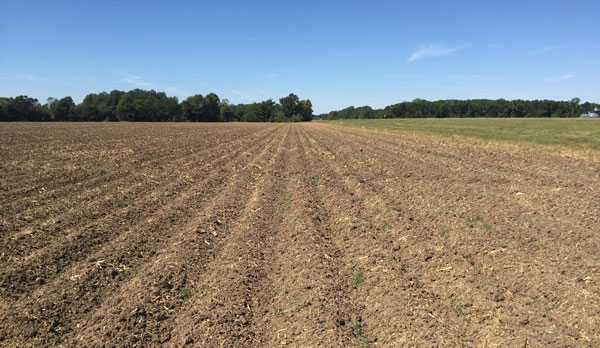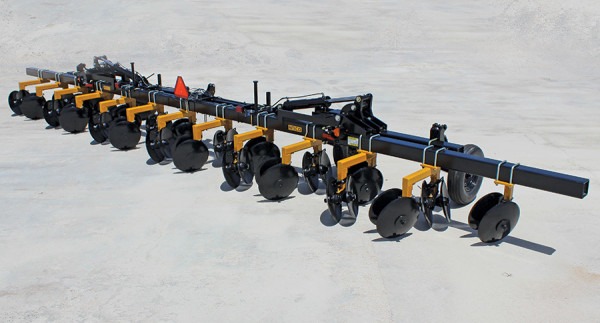Rain—it can be a blessing or a curse. When those life-giving showers become excessive, many farmers look for solutions to keep their plants from drowning. Enter raised soil beds. Constructed in the fall after harvest or the spring before planting, raised beds keep plants up out of water, leading to better growth and yields. In a 2007 study at Mississippi State University, researchers found a 17.7 bushel advantage to using raised beds vs. flat ground.¹
Other benefits of raised beds
The raised beds created by bedding hippers (known in some parts of the country as disc bedders) offer farmers a variety of benefits. One huge advantage is improved irrigation: the beds allow water to travel between the rows to and all the way across the fields. Many farmers choose to build beds in the fall, especially those with heavier soil like mixed clay, so they are ready to go for spring planting. Then in the spring, they knock off the very top of the ridge with the hipper and plant into it. Others with softer soil choose to create beds in the spring so they don’t degrade over the winter. Another reason to build beds in the spring would be a fall time crunch due to delayed harvest. Raised beds also offer:
- Faster soil drying—in wet years, you can plant sooner, leading to faster crop emergence
- Moisture retention—in a dry spring, farmers can drag off more of the tops to get to the moisture for planting
- Crop elevation—beds keep young plants up out of the water so they don’t drown
- Weed control—fall bed-building helps eliminate ryegrass, and many other weeds don’t like growing on raised beds
How to construct raised beds
Once you’re ready to start constructing your beds, operate the bedding hipper at 5 to 8 mph. Do not run any deeper than necessary. High speeds and shallow depths throw up uniforms beds. Low speeds and deep depth settings push the soil and may cause bulldozing in front of the gangs. Vary the gang angle to suit your ground conditions. Staggered gangs work well in most soil conditions and layer soil into smooth, somewhat rounded beds. Opposed gangs make higher, pointed beds and generally operate well at high speeds, but clog more easily in heavy, moist soil or trashy conditions.
How do you construct the ideal raised beds? AMCO offers High-Clearance Bedding Hippers in 6-, 8-, 10-, 12-, and 16-row assemblies. These Bedding Hippers offer some major advantages:
- Designed to work in high-residue conditions and heavy soil operations
- Adjustable gang angle with three settings for different soil types and bed configurations
- 1½” square axles and two of our Protect-O-Shield® bearings—backed by our exclusive two-year warranty—for trouble-free seedbed preparation
- Blade sizes ranging from 16″ to 24″—double blades standard, single blades optional
- Heavy-duty, all-welded, high-clearance gang frames
- AMCO High-Clearance Bedding Hippers are available for purchase separately or in combination with our Heavy-Duty Toolbars—Heavy-Duty Toolbar and Bedding Hipper assemblies can be custom built to fit your needs
Click here for more information and photos of AMCO’s Bedding Hipper.
1. http://deltafarmpress.com/scientist-compares-soybeans-flat-ground-versus-beds

